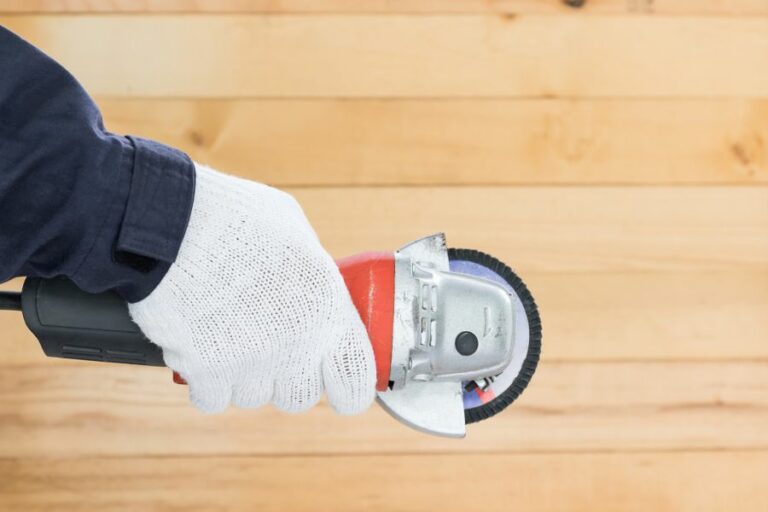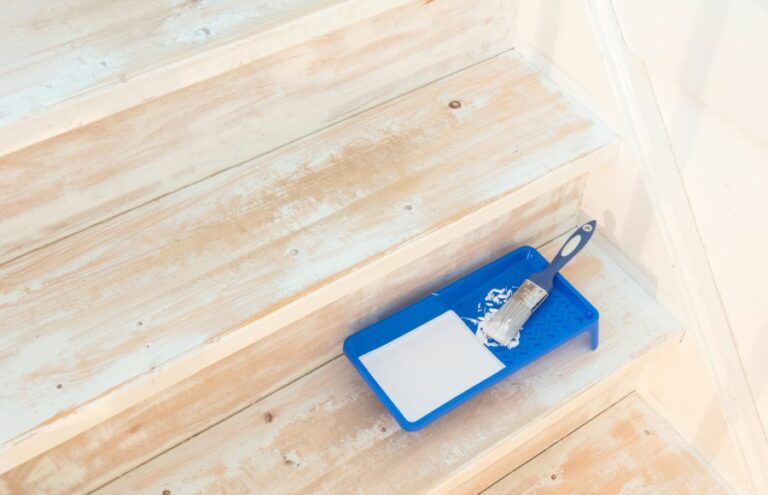Chemical-Based Cleaning For All Surfaces. What Pros Say
Tackling stubborn stains and dirt on various surfaces can be a daunting task, but fear not because we’ve got you covered with chemical-based cleaning solutions that work wonders on all surfaces. We understand the significance of a clean and healthy environment, and we are here to guide you on how to achieve that with confidence using our tested and proven chemical cleaning methods.
Chemical-based cleaning for all surfaces:
Chemical-based cleaning solutions offer effective and targeted cleaning for various surfaces. Alkaline cleaners remove grease and grime, acidic cleaners tackle mineral deposits and rust, disinfectants and sanitizers eliminate harmful microorganisms, and enzymatic cleaners break down organic stains and odors. Choosing the right cleaner is essential for safe and optimal results, and following the manufacturer’s guidelines is crucial.

Dive into the world of chemical-based cleaning and discover how it effectively tackles dirt on various surfaces. Don’t stop now! Read on to uncover the secrets behind powerful cleaning agents and how they can make your life easier. Witness the transformation of your home or office!
Contents
- 1 All-Surface Chemical Cleaning Solutions
- 2 Name of Chemical for Surface Cleaning
- 3 Defining Chemical-Based Cleaning Products
- 4 Four Key Techniques in Chemical Cleaning
- 5 Widely Accessible Universal Cleaning Agents
All-Surface Chemical Cleaning Solutions
• Importance of Chemical-Based Cleaning
In today’s world, it is essential to rely on chemical-based cleaning agents to effectively eliminate dirt, stains, germs, and bacteria from various surfaces. With an array of cleaning products available in the market, it can be overwhelming to choose the right one for your specific needs.
– Alkaline Cleaners
Alkaline cleaners are widely used for cleaning purposes due to their ability to break down oils, fats, and protein-based dirt.
These cleaners typically contain sodium hydroxide, potassium hydroxide, or ammonium hydroxide. They work best on surfaces like greasy floors, kitchen countertops, appliances, and bathroom fixtures.
Pros:
- Effective against grease and grime
- Suitable for a wide range of surfaces
- Non-toxic when used as directed
Cons:
- Can be corrosive to certain surfaces, such as aluminum or galvanized metals
- Can cause skin or eye irritation if not used in the proper dilution
Recommendation: To ensure the safe and efficient use of alkaline cleaners, always follow the manufacturer’s instructions and dilution ratios.
– Acidic Cleaners
Acidic cleaners, such as hydrochloric, sulfuric, or phosphoric-based solutions, are commonly used to tackle mineral deposits, rust, and hard water stains. They are particularly suited for surfaces like toilet bowls, ceramic tiles, and glass.
Pros:
- Effective against mineral deposits and rust
- Work quickly, reducing the required cleaning time
Cons:
- Can be harsh on surfaces, leading to potential damage
- Can cause skin or eye irritation if not used in the proper dilution
Recommendation: When using acidic cleaners, ensure to wear gloves and protective eyewear, and test a small inconspicuous area before applying it to the entire surface.
– Disinfectants and Sanitizers
Disinfectants and sanitizers are essential in reducing bacteria, viruses, and fungal microorganisms present on surfaces.
Common types include quaternary ammonium compounds (Quats), hydrogen peroxide, and chlorine-based solutions. These are ideal for use in kitchens, bathrooms, public spaces, and healthcare facilities.
Pros:
- Effective at killing or inactivating harmful microorganisms
- Can be used on a variety of surfaces
Cons:
- Some types can cause skin irritation or respiratory issues in sensitive individuals
- Improper use may lead to the development of resistant strains of bacteria
Recommendation: To get the most out of disinfectants and sanitizers, follow the contact time and dilution guidelines provided on the product label.
– Enzymatic Cleaners
Enzymatic cleaners contain enzymes and surfactants that break down proteins, fats, and carbohydrates found in organic matter. They are particularly effective against stains and odors caused by blood, urine, or food residue. These cleaners can be used on carpets, upholstery, and laundry.
Pros:
- Target specific types of stains and odors
- Generally safer and more environmentally friendly than traditional cleaners
Cons:
- May require a longer dwell time to be effective
- Can be expensive compared to other cleaning options
Recommendation: Begin by applying a small amount of the enzymatic cleaner to the stained area and allowing it to sit for the recommended time before blotting or scrubbing.
To learn more about the safety and effectiveness of various cleaning chemicals, you can visit the Environmental Protection Agency’s Safer Choice website.
• Conclusion
Depending on the type of surface and the kind of dirt or stain you are dealing with, choosing the right chemical-based cleaner is crucial for optimal and safe results.
By understanding the benefits and drawbacks of commonly used cleaning agents, you can make well-informed decisions about the most suitable cleaning products to use in your home or workplace.
Remember to always follow the manufacturer’s guidelines and take appropriate safety precautions when handling chemicals.
Name of Chemical for Surface Cleaning
Surface cleaning chemicals, also known as surfactants, play an essential role in maintaining cleanliness in both domestic and industrial settings. These chemical agents break down and remove dirt, grease, and grime from various surfaces, making it easier to clean and maintain a hygienic environment.
• Types of Surface Cleaning Chemicals
There are four main types of surfactants commonly used for surface cleaning. Each type has its unique properties and potential applications.
– Anionic Surfactants
Anionic surfactants are known for their strong cleaning power and ability to create foam. They work by disrupting the surface tension of water, causing it to spread out and efficiently dissolve and remove dirt and stains.
Common examples of anionic surfactants include sodium lauryl sulfate (SLS), sodium laureth sulfate (SLES), and linear alkylbenzene sulfonate (LAS). They are widely used in laundry detergents, dishwashing liquids, and general-purpose cleaners.
– Cationic Surfactants
Cationic surfactants are positively charged and often used as disinfecting agents because of their ability to kill bacteria and other microorganisms. They are less effective at removing dirt compared to anionic surfactants but are useful for combining cleaning with disinfecting properties.
Examples of cationic surfactants include benzalkonium chloride, cetrimonium chloride, and quaternary ammonium compounds (QUATs). Products such as fabric softeners and sanitizing wipes often contain these surfactants.
– Nonionic Surfactants
Nonionic surfactants are neutral in charge and, therefore, less reactive with other chemicals. They are known for their ability to remove oily substances and are effective for degreasing applications.
Examples of nonionic surfactants include alcohol ethoxylates and alkylphenol ethoxylates. These agents can be found in cleaning products such as all-purpose cleaners, glass cleaners, and car wash detergents.
– Amphoteric Surfactants
Amphoteric surfactants can exhibit both positive and negative charges depending on the pH of the solution. They are known for their mildness and compatibility with other surfactants, which makes them a common choice for personal care products, such as shampoos and body washes.
Examples of amphoteric surfactants include cocamidopropyl betaine and sodium lauroamphoacetate.
• Selecting a Surface Cleaning Chemical
Choosing the right surface cleaning chemical depends on several factors, including the type of surface being cleaned, the nature of the dirt or stains, and whether any additional properties, like disinfection, are required.
- Determine the nature of the dirt or stain: If cleaning a greasy or oily surface, nonionic surfactants will be most effective. For heavily soiled or stained surfaces, opt for a cleaning agent containing anionic surfactants.
- Consider the surface type: Delicate surfaces, such as glass or marble, require a milder cleaning agent, like a nonionic or amphoteric surfactant. In contrast, tough surfaces, like floors and countertops, can withstand stronger cleaning agents containing anionic surfactants.
- Evaluate additional needs: If disinfection is a concern, cationic surfactants should be incorporated into the cleaning regimen. Alternatively, for personal care or sensitive environments, consider using amphoteric surfactants.
• Recommended Practices for Surface Cleaning
Achieving the best results when cleaning surfaces often depends on using the appropriate techniques and precautions. Here are some recommendations to help ensure the effective use of surface cleaning chemicals:
- Always read labels: Before using a cleaning product, read the label to understand its intended use and follow the recommended instructions for application, dilution, and any specific warnings.
- Test a small area first: For sensitive surfaces, test the cleaning agent on an inconspicuous area before applying it to the entire surface to avoid potential damage.
- Properly dilute concentrated cleaners: Many surface cleaning chemicals come in concentrated forms that need to be diluted before use. Always follow the manufacturer’s instructions for diluting to achieve the ideal cleaning results without causing harm to surfaces.
- Avoid mixing chemicals: Mixing different cleaning agents can result in dangerous chemical reactions. Only combine products if specifically recommended by the manufacturer.
- Use appropriate tools: Utilize appropriate cleaning tools like brushes, sponges, or microfiber cloths to help dislodge dirt and grime, making the cleaning process more efficient and effective.
Surface cleaning chemicals play a crucial role in maintaining cleanliness and hygiene in our everyday lives. By understanding the different types of surfactants and selecting the appropriate cleaning agent for each task, you can effectively and safely clean your home or workspace.
Defining Chemical-Based Cleaning Products
A chemical-based cleaner is a cleaning agent that contains chemicals designed to dissolve or remove dirt, grime, and stains from various surfaces. These cleaning agents can be divided into several categories depending on their purpose and the chemicals used in their formulation.
• Categories of Chemical Based Cleaners
– Acidic Cleaners
Acidic cleaners are formulated using acids such as hydrochloric acid or sulfuric acid. They are commonly used to remove mineral deposits, rust, and other inorganic stains.
Acidic cleaners are particularly effective on hard surfaces such as tiles, glass, and metal. Examples of acidic cleaners include toilet bowl cleaners, descaling agents, and rust removers.
– Alkaline Cleaners
Alkaline cleaners use alkaline components like sodium hydroxide or potassium hydroxide. They are designed to break down organic materials such as grease, oil, and proteins.
Alkaline cleaners are often used in kitchens and bathrooms and for heavy-duty cleaning. Examples of alkaline cleaners include oven cleaners, degreasers, and drain openers.
– Neutral Cleaners
Neutral cleaners have a pH level close to 7, making them gentle for use on most surfaces. They are designed to remove light stains, dirt, and grime without causing damage to the surface.
Neutral cleaners are typically used for general cleaning tasks, such as wiping down countertops, windows, and floors.
– Disinfectants and Sanitizers
Disinfectants and sanitizers are chemicals designed to kill microorganisms like bacteria, viruses, and fungi on surfaces. They can be used in conjunction with other cleaning agents to ensure a thorough cleaning and disinfection process.
Disinfectants are commonly used in healthcare settings, while sanitizers are more widely used in commercial and residential spaces.
• How Do Chemical-Based Cleaners Work?
Chemical-based cleaners work by utilizing the properties of their active ingredients to dissolve or break down dirt, grime, and stains. The following are some common mechanisms through which chemical-based cleaners act:
– Emulsification
Emulsification is the process of breaking down and dispersing grease, oil, and other organic materials into small particles. This allows the cleaner to mix with water, making it easier to remove them from the surface.
Alkaline cleaners like degreasers often use emulsification to carry out their cleaning action.
– Solvent Action
Solvent action involves the use of chemicals to dissolve dirt and stains, allowing for easy removal from surfaces. The choice of solvent depends on the type of stain being treated.
For example, acetone can be used to remove ink stains, while white vinegar can be used to remove mildew or mold.
– Surfactant Action
Surfactants are chemicals that reduce the surface tension of water, allowing it to better penetrate and remove dirt and stains.
Surfactants can be found in a wide range of cleaning agents, including detergents, soaps, and multipurpose cleaners. They are particularly effective at breaking down dirt, making it easier to rinse away.
– Oxidizing Action
Oxidizing agents, such as bleach, work by breaking down stain molecules into smaller, colorless molecules. This process effectively removes the color from the stain, making it less visible or even invisible.
Oxidizing agents are particularly effective for treating colored stains such as red wine or fruit juice.
• Recommendations Based on Experience
When selecting a chemical-based cleaner, keep in mind the following recommendations:
- Choose the appropriate cleaner for the specific type of dirt, grime, or stain, as well as the surface being cleaned.
- Test the cleaner on a small, inconspicuous area before applying it to the entire surface to ensure compatibility and prevent damage.
- Follow the manufacturer’s instructions for proper dilution and application to avoid damaging surfaces or causing injury.
- Ventilate the area when using chemical-based cleaners to prevent the buildup of harmful fumes.
- Wear appropriate personal protective equipment (PPE), such as gloves and safety goggles, when handling chemical-based cleaners.
- Consider using alternative, eco-friendly cleaning options when possible, such as vinegar, baking soda, or enzymatic cleaners.
• Additional Resources
For more information on chemical-based cleaners and their proper use, visit the U.S. Environmental Protection Agency’s (EPA) Safer Choice program.
This program helps consumers, businesses, and institutional buyers identify cleaning and other products that perform well and are safer for human health and the environment.
Four Key Techniques in Chemical Cleaning
Chemical cleaning, an essential process in many industries, is the removal of unwanted contaminants or residues from various surfaces, primarily using chemical methods.
We’ll explore four primary methods of chemical cleaning: acid cleaning, alkaline cleaning, degreasing, and passivation. We’ll provide an overview of each technique, along with their respective applications, benefits, and recommendations for optimal results.
• Acid Cleaning
Acid cleaning, also known as acid pickling or acid washing, involves utilizing acidic solutions to dissolve and remove deposits from surfaces, particularly inorganic scales, rust, or oxides.
This method is widely applied in industries such as metal fabrication, power generation, petrochemical, and water treatment.
– Acid Cleaning Applications
Typically, acid cleaning is used for:
- Removing rust and scale from metal surfaces, like pipes, boilers, and heat exchangers.
- Preparing metal surfaces for subsequent treatments, such as coating or plating.
- Descaling water treatment equipment to remove mineral deposits and prevent corrosion.
– Acid Cleaning Recommendations
I recommend selecting the appropriate acid solution based on the type of contaminant and material being cleaned. Commonly used acids include hydrochloric, sulfuric, nitric, and phosphoric acids.
The concentration and temperature of the acid solution may also require adjustment for the desired cleaning effect.
While acid cleaning can effectively remove undesirable contaminants, taking safety precautions when handling acidic materials is crucial. This includes wearing personal protective equipment (PPE) and ensuring adequate ventilation.
Additionally, inspectors from the National Association of Corrosion Engineers (NACE) can provide guidance on best practices for safe and effective acid-cleaning procedures.
• Alkaline Cleaning
Alkaline cleaning relies on alkaline solutions, typically formulated with sodium or potassium hydroxide, to dissolve and remove organic contaminants such as grease, oil, and dirt.
This method is often utilized for cleaning ferrous and non-ferrous metals in industries like automotive, aerospace, and general manufacturing.
– Alkaline Cleaning Applications
Common applications for alkaline cleaning include:
- Removing oil and grease from engines, transmission components, and bearings.
- Cleaning heat exchanger tubes, filters, and separators to ensure efficient heat transfer and fluid flow.
- Preparing metal surfaces for subsequent treatment processes, such as painting or coating.
– Alkaline Cleaning Recommendations
Selecting the right alkaline solution and temperature for the specific cleaning task is critical. Generally, higher temperatures accelerate the cleaning process but may require adjustments to avoid damage to the parts being cleaned.
In addition to choosing the correct alkaline solution, proper rinsing and drying are essential to prevent residue build-up and potential corrosion.
• Degreasing
Degreasing, an essential step in preparing surfaces for further processing, involves the removal of lubricants, adhesives, protective coatings, and similar oily or greasy substances. Solvents, emulsifiers, and detergent-based cleaners are common agents used for degreasing.
– Degreasing Applications
Degreasing methods are predominantly employed in the following contexts:
- Automotive and aerospace industries for the cleaning of mechanical components and engine parts.
- Electronic manufacturing for removing flux residues from printed circuit boards (PCBs) and integrated circuits.
- Metal fabrication and machining processes where oils and cutting fluids are used.
– Degreasing Recommendations
For optimal degreasing results, selecting the right cleaning agent specifically formulated for the contaminants and substrate material is essential. Temperature control, agitation, and proper rinsing can also contribute to an effective degreasing process.
The use of environmentally friendly degreasing agents, such as water-based or bio-based solvents, should be considered whenever feasible to minimize environmental impact.
The Environmental Protection Agency (EPA) offers guidelines for selecting and using environmentally conscious cleaning agents.
• Passivation
Passivation, a chemical cleaning method primarily used on stainless steel materials, involves creating a passive oxide layer on the surface to enhance its corrosion resistance.
Passivation processes utilize nitric or citric acid solutions to remove free iron and other surface contaminants that may initiate corrosion.
– Passivation Applications
Passivation is widely employed in industries and applications where corrosion-resistant materials are critical, including:
- Pharmaceutical and biotechnology processing equipment.
- Food and beverage manufacturing to maintain equipment hygiene and integrity.
- Chemical processing and storage equipment to protect against aggressive and corrosive media.
– Passivation Recommendations
When performing passivation, adhering to industry standards, such as ASTM A380 and A967, is essential for ensuring a successful process. Proper cleaning and degreasing of the stainless steel surface before passivation are also crucial to achieving optimal results.
Moreover, it’s vital to consider the specific stainless steel grade, acid concentration, and treatment time, among other factors, when executing passivation procedures.
• In Conclusion
Acid cleaning, alkaline cleaning, degreasing, and passivation are the four primary methods of chemical cleaning, each with its unique applications, benefits, and recommendations.
Understanding these methods, along with their specific requirements and precautions, will enable you to make informed decisions when implementing effective chemical cleaning processes in your industry.
Widely Accessible Universal Cleaning Agents
Water, the most essential and versatile element on earth, is also the most universally available cleaning agent. We will explore the properties of water that make it such an exceptional cleaning agent, its usage in various cleaning applications, and tips on how to utilize it effectively in our daily lives.
• Remarkable Properties of Water
– Polarity
One of the primary reasons behind water’s exceptional cleaning abilities is its polarity. Water molecules have a unique molecular structure where the oxygen atom is slightly negatively charged, and the hydrogen atoms are slightly positively charged.
This polarity allows water to dissolve and dislodge a wide range of molecules and substances, resulting in its incredible cleaning capabilities.
– High Heat Capacity
Water has a high heat capacity, which means it can absorb a significant amount of heat before its temperature increases. As a result, it takes longer to heat up and cool down compared to other substances.
This quality makes water ideal for cleaning applications that require heat, such as in washing machines and steam cleaning.
– Surface Tension
Surface tension is another property of water that contributes to its cleaning effectiveness. This phenomenon occurs when water molecules at the surface bond more tightly with each other than with the surrounding air.
This cohesive force results in a strong “skin” on the water’s surface, enabling it to spread evenly when applied to surfaces.
• Applications of Water as a Cleaning Agent
– Domestic Cleaning
In a domestic setting, water is indispensable for cleaning purposes. Ranging from dishwashing, laundry, and general household cleaning, water is the cornerstone of clean and healthy living.
In conjunction with soaps and detergents, water is responsible for breaking down dirt, grease, and stains effortlessly, making our lives significantly easier.
– Industrial Cleaning
Water is also widely used in industrial cleaning applications due to its cost-effectiveness and accessibility. Industries such as food and beverage processing, automotive, and electronics manufacturing all rely heavily on water for various cleaning and sanitation purposes.
In many cases, water is combined with other cleaning agents or chemicals to enhance its effectiveness and cater to specific needs.
– Environmental Cleaning
Lastly, water is a crucial component in environmental cleanup efforts. Chemical spills, oil spills, and other environmental hazards often require large amounts of water to dilute and dissipate contaminants.
In some cases, water is combined with other substances to create specialized cleaning solutions for specific environmental contaminants.
• Tips on Using Water Effectively for Cleaning
– Use the Right Temperature
Different cleaning tasks require different water temperatures. For instance, hot water is more effective at dissolving grease and grime in dishes, while cold water is ideal for laundry to prevent clothes from shrinking or becoming discolored.
Knowing the appropriate temperature for each task will ensure optimal cleaning results.
– Combine with Appropriate Cleaning Agents
While water is an excellent cleaning agent on its own, its effectiveness can be enhanced by using the right soaps, detergents, or cleaning chemicals. Ensure to select the appropriate cleaning agent for the task at hand and follow manufacturers’ recommendations for proper usage and dilution.
– Utilize Water-Saving Techniques
While water is a precious resource, it is essential to use it conservatively to reduce waste and environmental impact. Some water-saving tips include using a spray nozzle for targeted cleaning, fixing leaks promptly, and opting for water-efficient appliances.
– Reuse and Recycle Water
Whenever possible, practice water recycling to minimize wastage. For example, you can use the water from rinsing vegetables to water your plants or collect rainwater for outdoor cleaning tasks. Such practices not only save water but also contribute to environmental conservation.
• In Conclusion
Water’s unique properties, wide-ranging applications, and universal availability make it the world’s most widely used and effective cleaning agent.
By understanding and utilizing its capabilities wisely, the cleaning potential of water can be harnessed to maintain a clean and healthy environment in our homes, workplaces, and surroundings.
For further information on water as a cleaning agent, visit the United States Environmental Protection Agency’s WaterSense program, which offers valuable resources on water conservation and efficiency.







